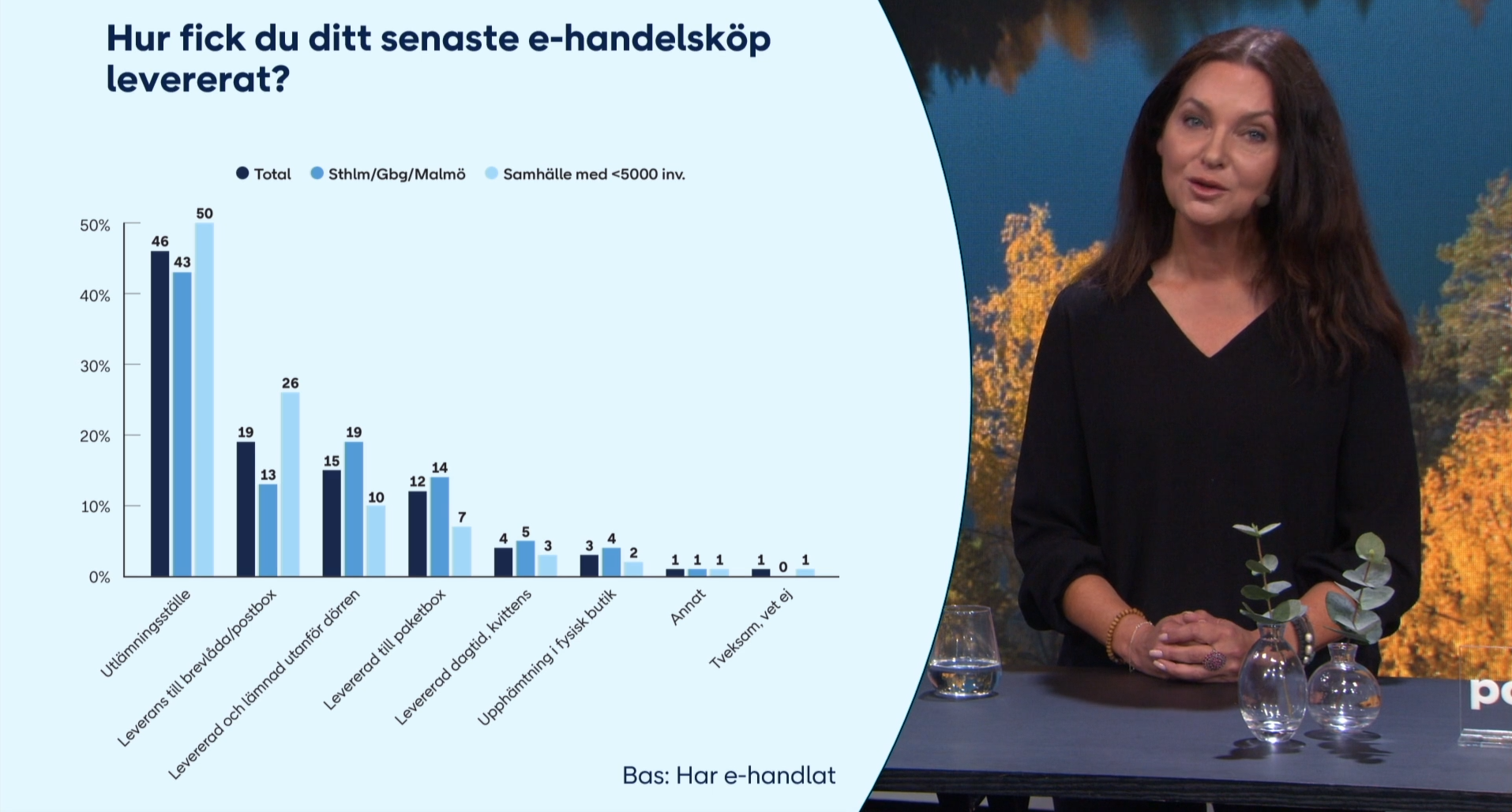The report E-barometern Q2 2022
When the report E-barometern for Q2 2022 was presented, we learned that this quarter too, the growth for e-commerce in Sweden was -8% for Q2 2022 compared to an extremely strong quarter in 2021.
There are a couple of industries that increased during the quarter – pharmacy goods and clothing and shoes compared to 2021, the rest have declined. Grocery has declined the most with a 28% decrease compared to Q2 2021.
When Sweden now enters a recession, the price of electricity rises together with fuel costs, interest rates rise and inflation increases the general price level, consumers become more cautious and hold their wallets when purchasing durable goods. Malin Winbom, Chairman of Svensk Digital Handel and COO of Svensk Handel, talks about the importance of finding profitability in one's business so that the focus can be placed on the right things. She also tells us that there is a strong belief in the future of e-commerce in general within the industry.
Being able to choose the delivery method that suits the customer best is becoming increasingly important. 37% state that they refrained from buying because they were not offered the delivery option they preferred. Delivery points still account for about half of deliveries when consumers answer how they got their last e-commerce purchase delivered. The interest in delivery to parcel boxes has increased steadily in recent years, while the drop-off point is decreasing.

Consumers do more research during recessions
Micael Dahlen, author and professor of economics, began to talk about today's consumer and his research on how consumers like to behave when we need to cut things out of our consumption. According to him, if there is ever a time when we change our habits, it is during recessions when we stay at home more and can be more digital at home. For entrepreneurs, this is a good opportunity to find new customers. He had also looked at instant rewards that we like to give ourselves – chips sales had increased during the pandemic, and he had also found that lipstick sales increased during recessions – for a quick and easy change in appearance. He concluded with a call to the e-retailers to find out what their lipstick or bag of chips is in the business.
He predicts that more time will be spent on research before buying when we will now be at home more, something that Erik Modig, Doctor of Economics and researcher, also states. Consumers evaluate and do more research during recessions. Profitability is becoming increasingly important. He also points out that customers today are not as loyal, but that this also applies to your competitors' customers who can be won over.
He talks about some different strategies that you can use such as:
- Business differentiation – if you can deliver some type of unique product. One can imagine collaborations between different brands that create something unique in terms of products.
- Being more visible with a budget – he believes this strategy does not work as well in boom times, but during a recession it can be effective to use a larger budget to be visible.
- Market differentiation – create a unique relationship with the target group. The strategy is then to choose to focus on a certain target group that is profitable for your business.
Erik also talks about the importance of seeing it as long-term strategies and building relationships in order to increase profitability when the boom picks up speed.
Winning business models
Today, more than 8 million Swedes use the hugely popular payment method Swish. Urban Höglund, CEO at Swish, talks about the development Swish has made as part of digital payments. From being a service between private individuals to companies offering the means of payment both in stores and online, companies can now also make payments to private individuals.
Margareta Boström, Business Developer at Jula, says that Swish quickly became the most popular means of payment in e-commerce and it is now also possible to Swish in stores. In the case of returns, the refund takes place immediately, which is appreciated by customers.
Johannes Åverling, Director of Retail Operations at Clas Ohlson, talks about the meeting with customers in different channels, how much they invest in training their employees in product knowledge. And to be there for the customers. He says that their employees need to go to the manager if they want to say no to a customer, but the employees themselves have the mandate to say yes. He also talked about testing many different things in their business development. Everything from collaborating with Mathem so that their customers can order products from Clas Ohlson on the same site and have it delivered at the same time with the same delivery truck. Some Clas Ohlson stores have become feeder stores where they can offer same-day home delivery to customers where the stores are used as logistics hubs. They see that they need to be able to offer different delivery options to suit customers. Almost half of Clas Ohlson's e-commerce customers choose to pick up their packages in their stores.
Channel strategies
There are many channels to choose from to meet your customers, and new ones are being added all the time. Christer Pettersson, Head of E-commerce at Hultafors Group, talks about the importance of not running on everything new but thinking and evaluating. Partly, where you think your customers are and also look at which other players are already on the channel. You don't have to be first on a channel.
Carola Lundell, CMO at Kicks, adds that TikTok has been such a channel that needed to mature first before it took off. She also talks about the importance of using your existing customers to find new customers. A satisfied customer who reviews is worth a lot. At Kicks, they use a service to send out a newsletter with suggestions to stock up on a product a number of days after the purchase was made when they calculate that it should be time to stock up.
Kattis Åström, Head of Experience at the marketplace Fyndiq, points out that all newsletters that are sent out to everyone several times a week will cause consumers not to see what is important in the newsletters if there are too many. Christer thinks that you can send newsletters with product and price less often, but if you alternate it with advice and tips and personalized mailings, you can get away with more opportunities. It's all about being relevant to that particular customer.
We also found out that we can book 21 February 2023 in the calendar for the next PostNord Retail Day where the annual report for E-barometern 2022 will be presented.
